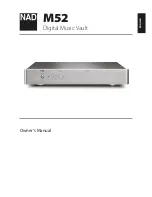
English
5
Advance the flexible guidewire with forward motion into and past the needle hub into the
target vein. Insertion length is dependent upon the patient size.
Caution: Do not pull the guidewire back through any component.
Caution: Use fluoroscopy or ultrasonic guidance to assure proper guidewire insertion
and placement.
Cardiac arrhythmias can result if the guidewire is allowed to enter the right atrium. Use
cardiac rhythm monitoring to detect arrhythmias.
Remove the needle over the guidewire, making sure the guidewire is securely held through-
out removal of the needle.
C. Vessel Dilation and Catheter Insertion
Vessel Dilation and Sheath Insertion
Slide a vein dilator onto the wire and advance it through the skin and into the vein. Be sure
not to advance the guidewire. The guidewire must be stationary during dilator advancement.
Serial dilation is preferred. If other dilators are used, thread dilator(s) over guidewire into the
vessel. Remove dilator(s) when vessel is sufficiently dilated, leaving guidewire in place.
Caution: Do not leave vessel dilators in place any longer than necessary to avoid possible
vessel wall perforation.
Slide the peel away introducer/sheath over the guidewire into the vein while maintaining the
guidewire position.
Caution: Fluoroscopic guidance must be used to avoid vessel puncture.
Remove guidewire.
Caution: Do not leave sheath in place any longer than necessary to avoid damaging the
vein.
Catheter Insertion
WARNING: NEVER ATTEMPT TO SEPARATE LUMENS.
Remove dilator from previously inserted sheath.
To avoid blood leakage, clamp the proximal extensions of the catheter with the supplied flat
clamps before inserting the catheter into the sheath.
Insert distal tips of catheter into and through the sheath until catheter tips are correctly
positioned into the target vein.
Caution: Quickly insert catheter in the sheath to prevent blood loss or air embolism.
Caution: Catheter tip placement in the appropriate location produces optimal blood flow
as outlined in KDOQI guidelines.
Caution: Serious trauma or fatal complications can result from failure to verify catheter
placement.
Gently and slowly, pull the peel away sheath out of the vessel.
Catheter placement adjustments should be made under fluoroscopy or ultrasonic guidance.
The venous distal tip should be positioned at the level of the superior part of the right atrium,
at or beyond the caval atrial junction.
Caution: To avoid vessel damage when removing the peel away sheath, pull back the
sheath as far as possible and tear the sheath only a few centimeters at a time. Do not pull
on the portion of the sheath that remains in the vessel.
Summary of Contents for retrO
Page 107: ......






































